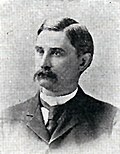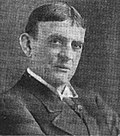Cong
ress | Years | Seat A | Seat B |
|---|
| Representative | Party | Electoral history | Representative | Party | Electoral history |
|---|
51st
52nd
53rd | October 1, 1890 –
March 3, 1895 | 
Willis Sweet
(Moscow) | Republican | Elected in 1890 and took seat upon statehood.
Re-elected in 1890.
Re-elected in 1892.
Retired. | |
| 54th | March 4, 1895 –
March 3, 1897 | 
Edgar Wilson
(Boise City) | Republican | Elected in 1894.
Retired to run for Idaho Supreme Court. |
| 55th | March 4, 1897 –
March 3, 1899 | 
James Gunn
(Boise) | Populist | Elected in 1896.
Lost re-election. |
| 56th | March 4, 1899 –
March 3, 1901 | 
Edgar Wilson
(Boise) | Silver Republican | Elected in 1898.
Retired. |
| 57th | March 4, 1901 –
March 3, 1903 | 
Thomas L. Glenn
(Montpelier) | Populist | Elected in 1900.
Retired. |
58th
59th
60th | March 4, 1903 –
March 3, 1909 | 
Burton L. French
(Moscow) | Republican | Elected in 1902.
Re-elected in 1904.
Re-elected in 1906.
Lost renomination. |
| 61st | March 4, 1909 –
March 3, 1911 | 
Thomas Ray Hamer
(St. Anthony) | Republican | Elected in 1908.
Lost renomination. |
| 62nd | March 4, 1911 –
March 3, 1913 | 
Burton L. French
(Moscow) | Republican | Elected in 1910.
Re-elected in 1912.
Retired to run for U.S. senator. |
| 63rd | March 3, 1913 –
March 3, 1915 | 
Addison T. Smith
(Twin Falls) | Republican | Elected in 1912.
Re-elected in 1914.
Re-elected in 1916.
Redistricted to the 2nd district . |
| 64th | March 4, 1915 –
March 3, 1917 | 
Robert M. McCracken
(Boise) | Republican | Elected in 1914.
Lost renomination. |
| 65th | March 4, 1917 –
March 3, 1919 | 
Burton L. French
(Moscow) | Republican | Elected in 1916.
Redistricted to the 1st district . |